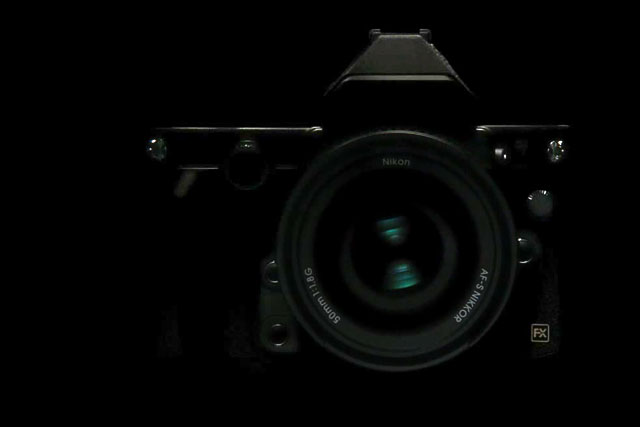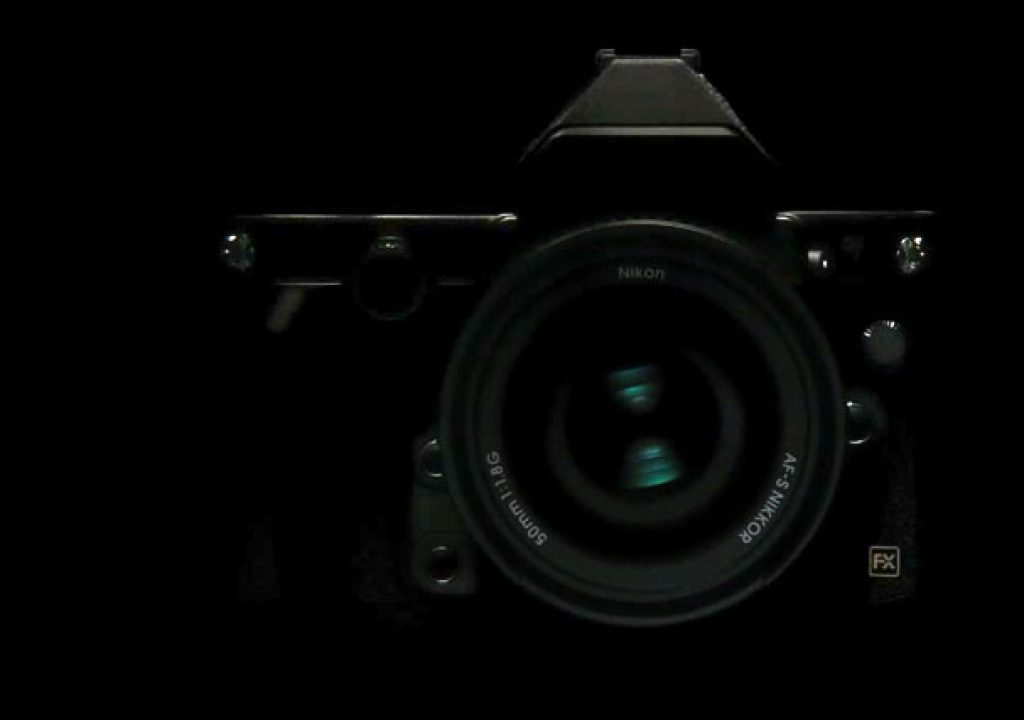
On the 5th November Nikon will present a new camera with a look from the past. Rumours suggest Canon may be dreaming of their own return: the AE1, now in digital. After all, Olympus brought us the OM. What is Sony going to do, as they've no history?
Nikon has just launched their second teaser video for a camera that will take photographers in a journey to the past. The so called DF (no one knows the name for sure) will be presented on the 5th November, promising Pure Photography. This second video in the series ends with a note: “Savor photography all over again 5 November, 2013”.
What Nikon means, with this, is that with so much technology, we seem to have lost the link to the essence of photography (and yes, many of us have, that's true), and they want to find that “missing link” and give it to photographers. Or to photographers willing to accept it and with enough money to buy the ticket for this journey. Which will not be cheap, not because of the technology involved, but because of style, I presume.
In fact, it seems Nikon is aiming at a “bare bones” camera, made simple as one could say old film cameras were, but a camera where simplicity has a high price tab, because it is hidden inside a body that gives us a window into the past. The first images available on the video suggest we're really going to have a camera body that looks like old Nikon F's, especially the F3 that seems to be the model for this new camera. For more information read, palse, my previous article, Nikon: the Return of the F3.
People may think Nikon is opening a new frontier – into our collective past as photographers… whatever that may mean – but in fact they're in second place. Olympus was the pioneer, when they created their new OM series (unfortunately buried under the strange and long name of Olympus OM-D E-M5… oh my god, could they not make it easier!).
The Olympus OM-D E-M5, announced in February 2012, although following the OM SLR concept in terms of body design, is a Micro Four Thirds compact mirrorless interchangeable lens camera. In style and name it references the Olympus OM series of film SLR cameras, but it is not an SLR camera. There is no optical path from lens to viewfinder: a high quality electronic viewfinder is used. So, for SLR purists, preferring the true optical vision and its advantages, this is something else.
Nikon, on the other hand, offers a camera which is, it seems, a SLR, or better, a DSLR, as it is a digital camera. In fact, the rumoured specs mention a pentaprism viewfinder and a full frame format. So, in terms of tradition, Nikon is more faithful to the roots. The available information, not confirmed yet, suggests the camera will meter even with non-AI lenses down to full aperture, it will have physical controls and excellent build quality and will ship with a new special edition Nikkor 50mm f/1.8G lens to match the look/design of the body.
The information supporting the video in the series Pure Photography offers some interesting notes to read and think about. Nikon asks “How can a photographer discover something fresh in old and familiar places?” to reply with a “It depends on where — and how — you look”.The description then says this: “Nikon presents a series of short movies depicting a photographer roaming through Scotland with a camera as his only companion. Discover how he reunites with his creative side on his journey of self-discovery.”
It is somehow fantastic how the marketing geniuses imagine and promote these things. The same marketing that promoted Nikon cameras as the D800 with terms like “Monumental Images” and “I am the Big Picture” want to convince the public, now, that the reunion with photographers creative side will be revealed, after all, on the 5th November. Nikon D800 owners be warned!
Are they alone? (Nikon, I mean) Not sure! The recent silence from Canon, which was expected to show new cameras until Christmas 2013, may have a meaning: they are looking at what Nikon is doing. We all now smartphones are eating in the segment of compact cameras, so it is time – IT IS URGENT! – for camera makers to discover new segments. Revisiting the past may be, for Canon, to reinvent their Canon AE-1, a 35 mm single-lens reflex (SLR) film camera manufactured in Japan from April 1976 to 1984 (imagine, a camera manufactured for 8 years…). The AE-1 is a historically significant SLR, both because it was the first microprocessor-equipped SLR and because of its sales. It was, at the time an unprecedented success in the SLR market.
Canon may want their slice of the pie, if there's any pie to eat, after all. So they may be preparing their own travel to the past. With most camera manufacturers gone these days, the share of DSLR looking like things from the eighties on last century may be limited to the names of Nikon and Canon. Some may think Sony could enter this race, but they can not, as they've no tradition in the SLR market, which they entered when they bought all technology from Minolta.
If Minolta was still around, they would, probably recreate their Minolta XD-7 (sold as the XD-11 in the U.S. and as the XD in Japan) a 35mm SLR camera introduced in 1977. It was the first camera to feature both shutter priority and aperture priority automatic exposure modes. The camera also offered fully metered manual exposure as well as depth of field preview and an eyepiece shutter. Also included were fully mechanical “O” (1/100 sec) and bulb settings, which allowed it to operate without a battery. The XD-7 was the top-of-the-line Minolta camera when it was in production and retains a reputation for quality. It was Minolta's last metal-bodied SLR design before the company switched to plastic with the X-700.
With Minolta gone, Pentax creating colourful pieces of nothing and most of the names – Contax, Fujica, Yashica, Konica, Cosina and others – dead or pointing in other directions, the trend of retro styled DSLR may be a small league, where only Canon and Nikon will play. Still, it will be interesting to see what future will bring us, of our past. The journey begins November 5th.

